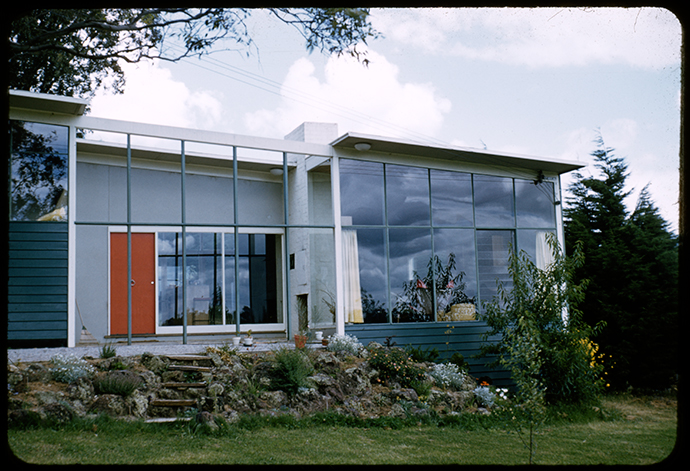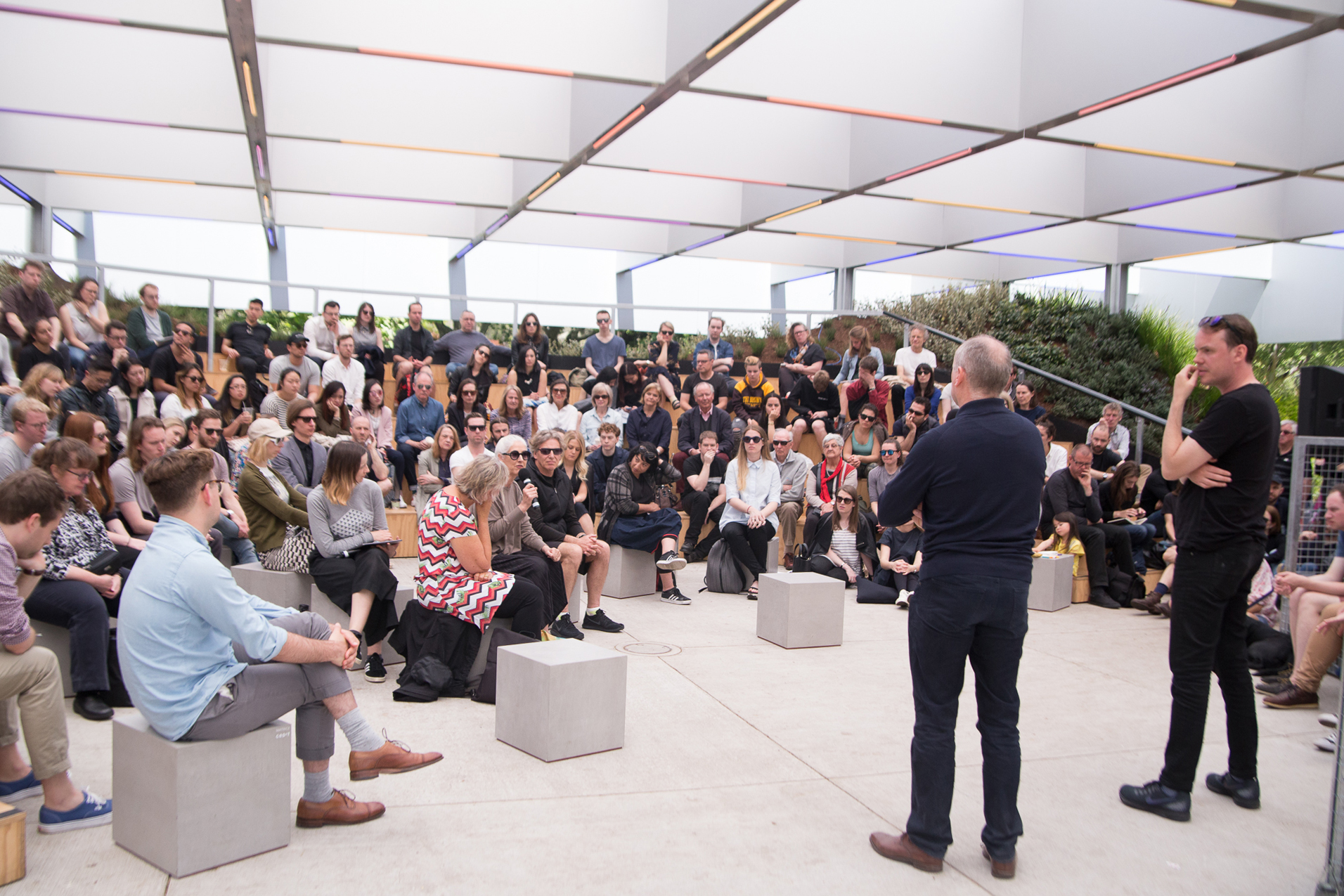Resurrecting Robin Boyd’s Small Homes Service model of design advocacy

Architects are prone to nostalgia. At worst, decades-old cultural skirmishes are scaled up and reskinned to paper over what could be a lack of contemporary gumption. But at best, an exquisite instance of bygone foment is dusted off and represented right when we need it. And it was into the latter category that Rory Hyde landed his MPavilion revival of The Small Homes Service and sentimental favourite Robin Boyd.
On a gorgeous spring day, warm under the polycarb roof of OMA’s rotunda, Hyde invoked the legacy of the Service to convene a public discussion about neglect of our suburbs. The title a subtle (but good-humoured) dig at the messianic tendencies of our nostalgia, “What would Boyd do?” asked a question far more pressing in an Australian context than any study of countryside: how can the Small Homes Service model of design advocacy be redeployed to address the challenges and aspirations of our sprawling fringe?
Philip Goad primed the discussion with a short and erudite sermon on the Service’s history. Hyde then promptly turned over the discussion to the gathering in a deliberate inversion of convention (in which the convener and panel normally dominate the allocated talking time). The audience obliged, being mostly highly-engaged architects and design enthusiasts, and therefore well-equipped to respond.

But of all the articulate and well-considered ideas offered, there remained an unspoken caveat: that the success of the Service’s project of mass education and uptake of design relied on an astute choice of medium. Though not the most widely read newspaper (at the time), The Age spoke with all the extraordinary authority of 20th century print media; an ideal scaffolding for the weekly articles of Boyd et al.
Contemporary marketing wisdom holds that architects must engage in a multi-platform and multi-pronged assault of self-publishing. But new media is, by definition, niche media. And even less helpfully, websites, social media, blogs, podcasts and so on are more often than not deployed in the service of promoting individual entities within architecture, not architecture as a whole. This conventional approach to media fails to address the implied ending to Hyde’s question: “What would Boyd do now to reach a mass audience with his message that ‘good design is for everyone’?”

Regrettably, no alternative strategy for mass communication was volunteered at the MPavilion, despite there being an obvious contender. Last Sunday night, a matter of hours after our mini-symposium dispersed, 1.5 million Australians tuned into The Block.
TV (whether on the box or on the web) is our number one source of entertainment and news; social media is a distant second, well ahead of both online and print media. This suggests the real equivalent to Boyd’s weekly column in The Age is a Sunday night segment on The Block. Whether architects like it or not, this is where a huge number of suburb-dwellers are turning for entertainment, and (even if subconsciously) design education.
The Block, House Rules, Reno Rumble, Renovation Rescue, Extreme Makeover (Home Edition), and even good old Better Homes & Gardens all use the same, simple formula: exploit Australia’s fondness for home ownership and DIY home improvement.
And now that The Block is firmly ensconced in our entertainment culture, it does more than merely exploit our proclivities. It cultivates our ambitions and, by osmosis, shapes our suburbs. It steers us away from triple glazing and toward the triple car garage. The Great Australian Dream is itself under renovation, as architects mostly stand on the sidelines (or in this case, the kerb).

Of course, architects have not completely ceded the Australian mass TV market. Notable efforts to turn ‘good design’ into TV include Australia By Design, Streets of Your Town, Dream Build, and Art Nation’s Good, Bad, Ugly. But in terms of longevity and ratings, the Grand Designs franchise is the only real contender. And still even charming Kevin McCloud can’t compete with master Blockhead Scotty Cam.
If we are to recover the gains won by the Small Homes Service half a century ago, architects must re-engage with our suburbs with the generosity and understanding of the Service. Distributing unnamed house plans for $250 a pop (inflation adjusted) is unthinkable for most architects in Australia today. But this is what some of our most celebrated local architects did, for almost 30 years, in order to bring good design to our suburbs.
We (architects) need to ask ourselves whether we are content with remaining useful to only the top echelons of our economy, or whether we genuinely wish to resuscitate Boyd’s legacy and engage with the majority of Australians. A Sunday night segment on The Block is probably not the answer, but it serves as a proxy for what ‘radical’ action we might take to reconnect with the 98%.